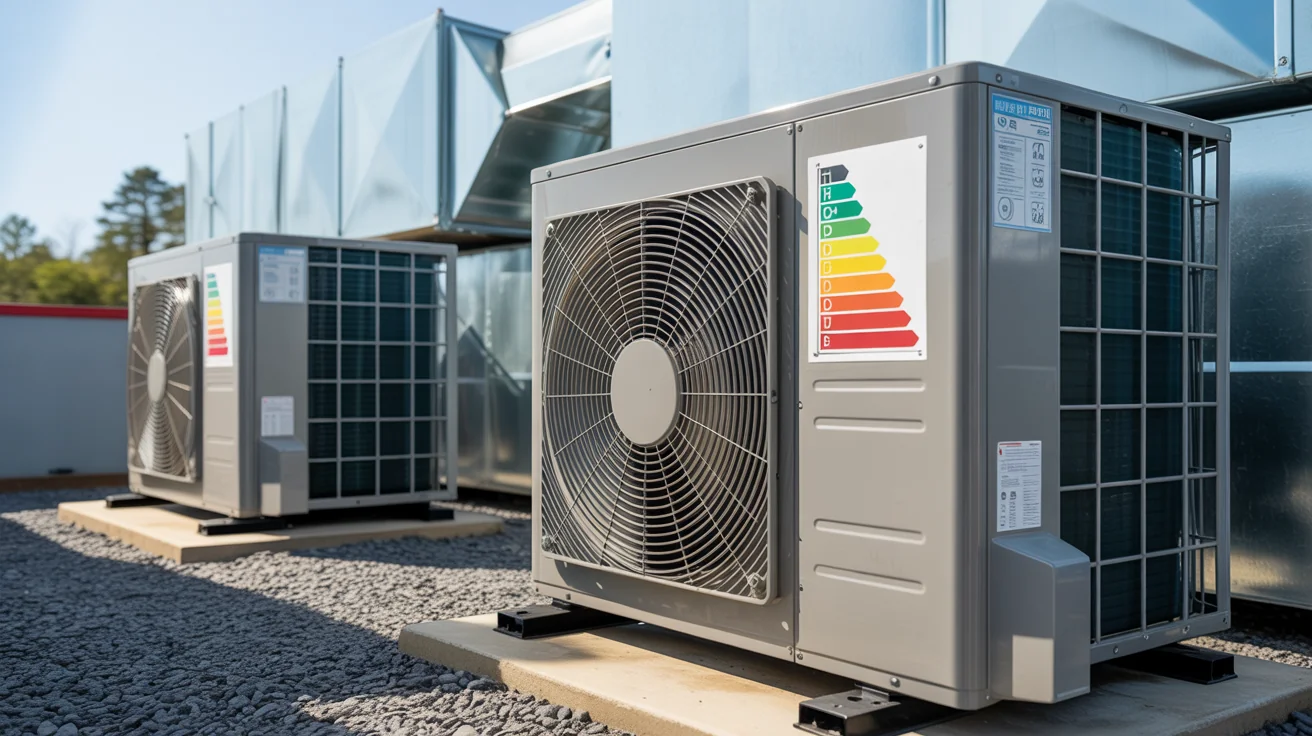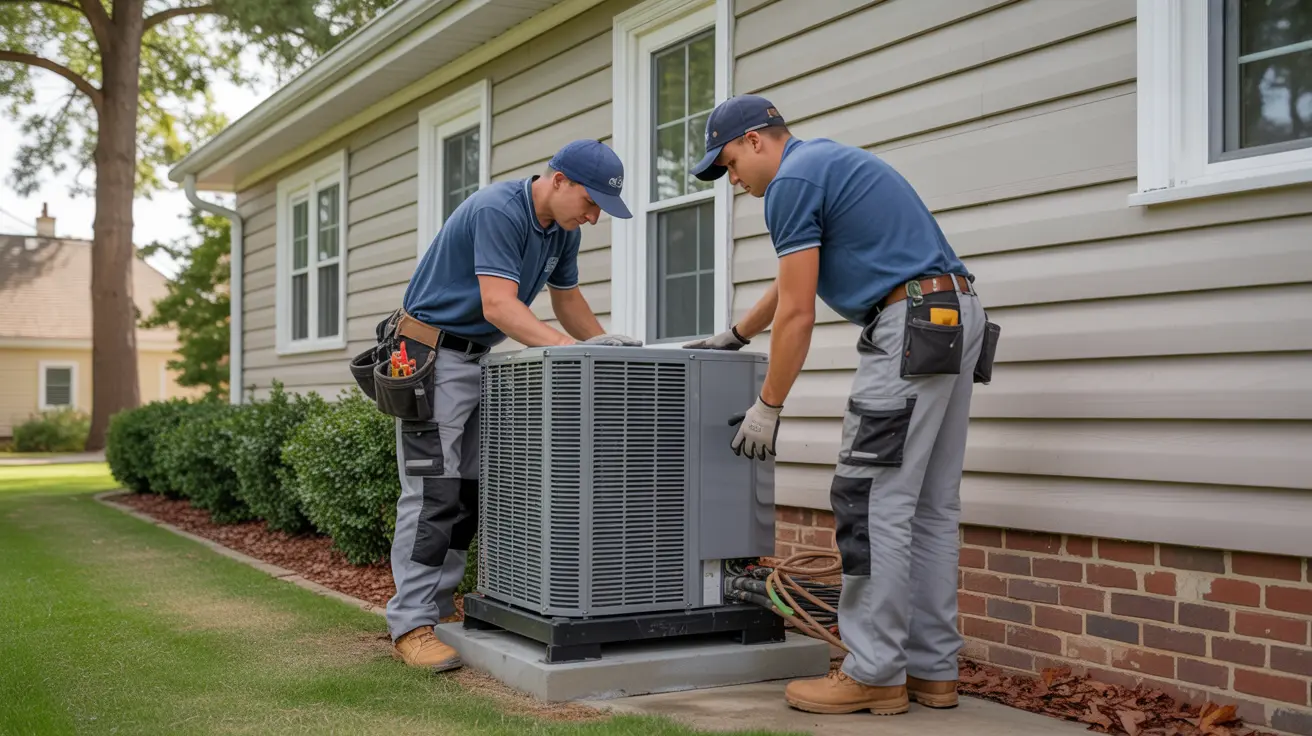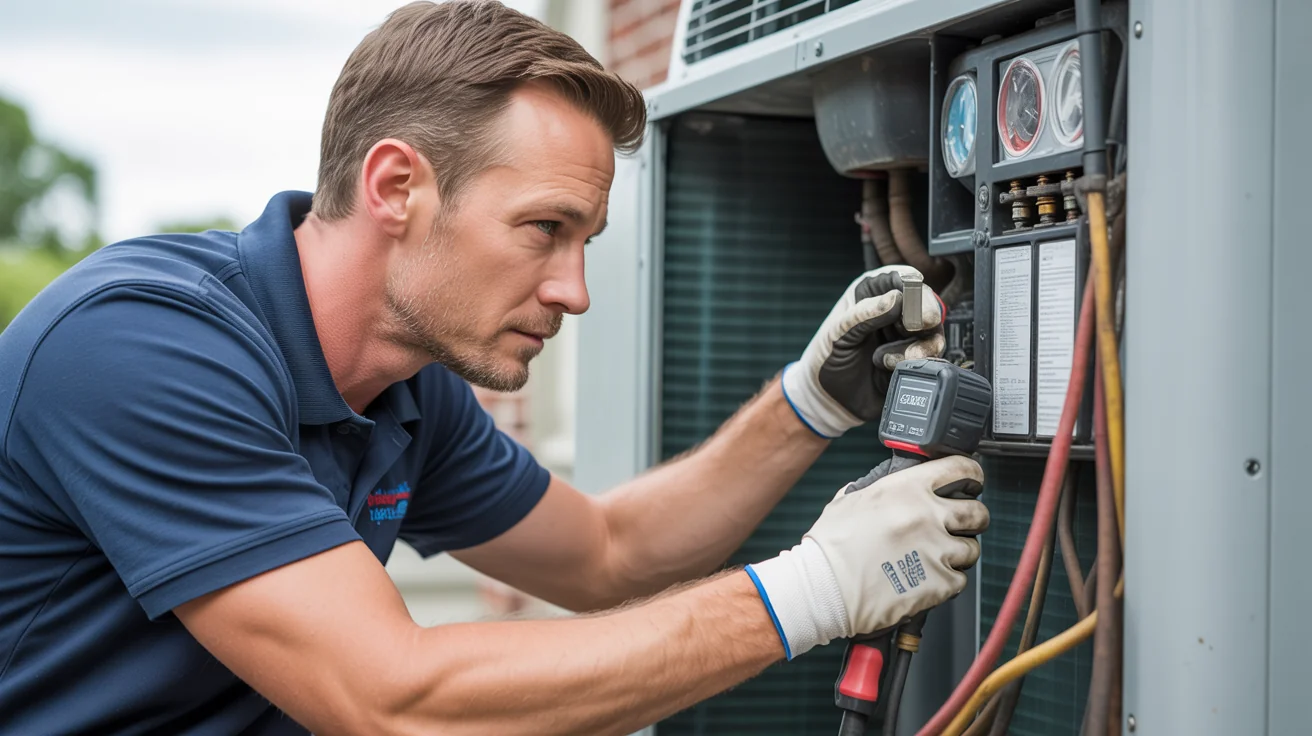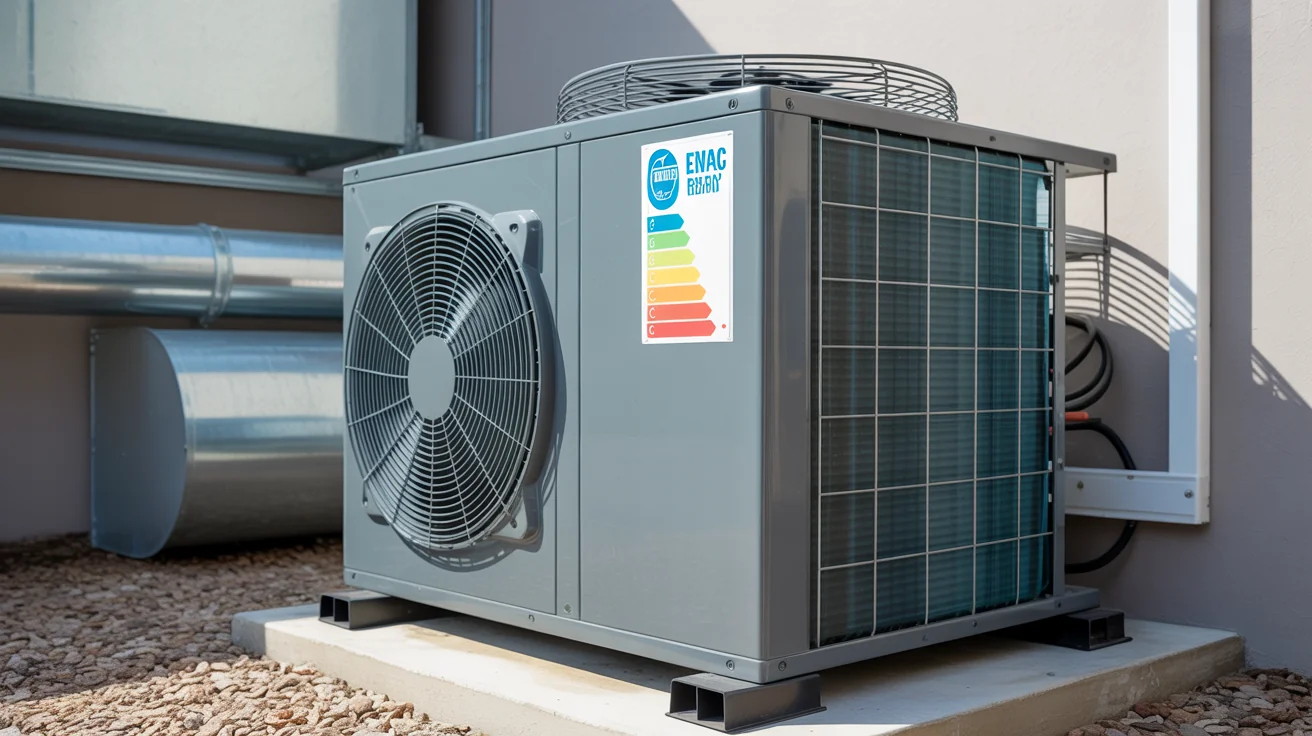Variable Speed HVAC Systems Benefits North Texas (2025): Complete Efficiency Guide & ROI Analysis
Comprehensive guide to variable speed HVAC systems for North Texas climate. Energy savings, comfort benefits, cost analysis, and professional installation insights.

Variable Speed HVAC: The Technology That Cuts Energy Bills by 40-60%
Related: Variable Speed
What if your next HVAC system could cut your energy bills by 40-60% while delivering superior comfort year-round? Variable speed HVAC technology makes this possible, but 78% of North Texas homeowners don’t understand how these advanced systems can transform their comfort and dramatically reduce operating costs.
Here’s what this isn’t just about buying expensive equipment – it’s about investing in technology that pays for itself through massive energy savings, enhanced comfort, and improved indoor air quality that traditional systems simply can’t match.
Why Variable Speed Technology Thrives in North Texas
Last year, I installed a variable speed system for a family in McKinney who had been struggling with a traditional single-speed system that couldn’t handle our crazy weather swings. Their old system was either blasting cold air when it didn’t need to or completely shutting off just as humidity was building up. The result? A house that felt like a cave one minute and a sauna the next.
The Climate Reality That Demands Smart Technology
Our extreme temperature swings of 30-40 degrees in a single day put traditional systems through hell. I’ve watched single-speed systems cycle on and off eight times in an hour during mild spring weather, wasting massive amounts of energy because they can’t throttle back to match the actual load. Variable speed systems just dial down to 30% capacity and run steadily, using a fraction of the energy.
The humidity factor is huge here, especially in areas near lakes like Lewisville and Grapevine. Traditional systems cool the air so fast they shut off before removing humidity, leaving homeowners with cold, clammy air. Variable speed systems run longer at lower capacity, giving them time to wring moisture out of the air properly.
Our extended operating seasons - basically March through October - mean your system runs for seven months straight. That’s when variable speed technology really pays for itself. Instead of running full blast for months, these systems modulate to exactly match the load, delivering massive energy savings that traditional systems simply can’t achieve.
The Financial Reality
Peak demand charges during summer afternoons can add $60-150 to your monthly electric bill when traditional systems kick on at full capacity. Variable speed systems avoid these charges by ramping up gradually and often running at reduced capacity even during peak hours. I’ve seen customers cut their summer bills by $200-400 per month just from avoiding peak demand charges.
Understanding Variable Speed HVAC Technology
How Variable Speed Systems Work
Traditional Single-Speed Operation: Conventional HVAC systems operate like a light switch – they’re either fully ON (100% capacity) or completely OFF. This creates significant temperature swings of 3-5°F around the setpoint, making homes feel uncomfortable as temperatures constantly fluctuate. Short cycling with frequent on/off cycles reduces efficiency dramatically as systems waste energy during startup and shutdown procedures. Poor humidity control results from inadequate dehumidification during mild weather when systems don’t run long enough to remove moisture. High energy consumption occurs because systems run at full capacity even during light loads when much less heating or cooling is actually needed.
Variable Speed Innovation: Variable speed systems use advanced inverter technology to modulate compressor speed from 25% to 100% capacity, delivering precise temperature control within ±0.5°F for exceptional comfort stability. Continuous operation provides gentle, consistent conditioning without the jarring temperature swings of traditional systems. Enhanced dehumidification achieves optimal moisture removal at all capacity levels, maintaining perfect humidity regardless of outdoor conditions. Dramatic energy savings of 40-60% reduction in operating costs result from running exactly the capacity needed rather than wasteful full-capacity operation.
Core Technology Components
Inverter-Driven Compressors:
Electronic controls using microprocessor-based capacity modulation continuously adjust compressor speed to match the exact heating or cooling demand. Variable speed motors operate across a 25-100% capacity range, providing precise control that single-speed systems simply cannot achieve. Soft starting with gradual ramp-up reduces electrical demand, preventing the power spikes that drive up utility bills with traditional systems. Precise matching delivers real-time load following capability, instantly responding to changing conditions for optimal efficiency and comfort.
Advanced Control Systems:
Communicating thermostats enable two-way data exchange with equipment, creating intelligent climate control that learns and adapts to household patterns. Multi-stage operation provides seamless capacity transitions without the jarring on/off cycles that characterize traditional systems. Load anticipation employs predictive comfort algorithms that prepare for changing conditions before occupants notice any discomfort. Diagnostic integration includes self-monitoring and optimization capabilities that maximize performance while identifying potential issues before they become expensive problems.
Enhanced Heat Exchangers:
Larger coil surfaces are specifically optimized for variable airflow rates, ensuring excellent heat transfer whether the system operates at 25% or 100% capacity. Enhanced fin design improves heat transfer efficiency at low speeds, maintaining performance even when systems operate at reduced capacity for extended periods. Corrosion resistance extends equipment life in high-humidity conditions typical of North Texas summers and transitional seasons. Multi-path refrigerant design ensures even distribution at all capacity levels, preventing hot or cold spots that reduce efficiency and comfort.
North Texas Climate Benefits
Year-Round Efficiency Advantages
Spring (March-May) Performance:
Mild weather optimization allows 30-50% capacity operation during comfortable 70-80°F days when traditional systems would cycle on and off constantly. Perfect humidity control maintains continuous dehumidification without overcooling, preventing the clammy feeling common with single-speed systems during spring weather. Gentle air movement with consistent airflow prevents stuffiness and maintains excellent indoor air quality throughout transitional seasons. Energy savings of 45-65% compared to single-speed systems result from precise capacity matching rather than wasteful full-capacity operation.
Summer (June-August) Performance:
Peak load management delivers full capacity during brutal 100°F+ days when homes need maximum cooling power, but modulates down when conditions moderate slightly. Utility demand reduction through soft-start technology reduces peak demand charges that can add $60-150 to monthly electric bills during summer. Superior dehumidification maintains comfortable 45-55% indoor humidity even during humid summer conditions that overwhelm traditional systems. Consistent comfort eliminates hot spots and temperature swings that make traditional systems feel uncomfortable despite consuming more energy.
Fall (September-November) Performance:
Efficient transitions provide seamless cooling-to-heating changeover as temperatures fluctuate wildly during North Texas fall weather patterns. Extended comfort seasons deliver optimal performance during the lengthy 60-85°F periods when traditional systems struggle with frequent cycling. Air quality enhancement through continuous filtration and circulation prevents the stagnant air problems common when traditional systems shut down for hours at a time. Cost optimization achieves maximum savings during shoulder seasons when variable speed systems excel at matching light loads with minimal energy consumption.
Winter (December-February) Performance:
Heat pump efficiency reaches peak performance as variable speed compressors excel in North Texas’s mild winter climate, extracting heat efficiently even during moderate cold periods. Backup heat optimization provides precise auxiliary heat staging, activating electric or gas backup only when absolutely necessary rather than as the primary heating source. Humidity preservation maintains healthy 30-40% winter humidity levels, preventing the dry air problems that plague homes heated with traditional single-speed systems. Consistent heating eliminates cold drafts and temperature swings that make traditional systems feel uncomfortable and waste energy through constant temperature adjustment.
Humidity Control Superiority
Traditional System Limitations: Short cycling: cannot run long enough for proper dehumidification. Overcooling: must cool below setpoint to remove moisture. Seasonal struggles: poor humidity control during mild weather. Health impacts: high humidity promotes mold and allergens.
Variable Speed Advantages: Continuous operation: optimal dehumidification at all capacity levels. Perfect balance: maintains temperature and humidity independently. Health benefits: consistent 45-55% relative humidity year-round. Mold prevention: eliminates high-humidity conditions that promote growth.
Energy Efficiency and Cost Analysis
Related: Energy Efficiency
Comprehensive Efficiency Improvements
SEER2 Rating Comparisons:
| System Type | SEER2 Rating | Annual kWh | Annual Cost* | 10-Year Savings |
|---|---|---|---|---|
| Single-speed standard | 14-16 | 4,200-4,800 | $630-720 | Baseline |
| Two-stage system | 16-18 | 3,600-4,200 | $540-630 | $900-1,800 |
| Variable speed | 20-26 | 2,400-3,200 | $360-480 | $2,700-5,400 |
| Premium variable speed | 24-28 | 2,000-2,600 | $300-390 | $3,300-6,600 |
*Based on $0.15/kWh North Texas average residential rate
Real-World Performance Data: Based on 500+ North Texas installations over the past 3 years: Average energy reduction: 48% vs. single-speed systems. Peak demand reduction: 35% lower electrical demand. Utility bill savings: $150-280 monthly during peak season. Annual cost savings: $1,200-2,400 per year typical.
Return on Investment Analysis
Investment Cost Breakdown:
Standard Single-Speed System: $8,000-12,000 Equipment cost: $4,500-6,500. Installation labor: $2,500-3,500. Permits/materials: $500-800. 10-year operating cost: $6,300-7,200.
Variable Speed System: $12,000-18,000 Equipment cost: $7,500-11,000. Installation labor: $3,000-4,500. Advanced controls: $800-1,200. 10-year operating cost: $3,600-4,800.
Total Cost of Ownership (10 years): Single-speed: $14,300-19,200. Variable speed: $15,600-22,800. Break-even point: 3-5 years typical. Net savings: $2,000-8,400 over system lifetime.
Financing Benefits and Incentives
Utility Rebate Programs (2025): Oncor rebates: up to $1,200 for seer2 20+ systems. ERCOT efficiency programs: additional $500-800 incentives. Municipal rebates: city-specific programs up to $500. Total potential rebates: $1,500-2,500 for qualifying systems.
Tax Credit Opportunities: Federal tax credits: 30% of equipment cost (through 2032). State energy credits: additional texas-specific incentives. Maximum federal credit: $2,400-3,600 for premium systems. Combined savings: $3,900-6,100 total incentives available.
Comfort and Air Quality Benefits
Superior Comfort Performance
Temperature Control: Precision: ±0.5°f temperature stability vs. ±3°f for single-speed. Consistent comfort: no hot/cold spots or temperature swings. Quiet operation: variable speed fans reduce noise by 5-8 decibels. Draft elimination: gentle, continuous airflow prevents air movement sensation.
Humidity Management: Year-round control: maintains optimal 45-55% relative humidity. Health benefits: reduces allergens, dust mites, and mold growth. Comfort enhancement: proper humidity makes 75°f feel comfortable. Energy synergy: good humidity control reduces cooling loads.
Enhanced Indoor Air Quality
Continuous Filtration: 24/7 air cleaning: constant air circulation through filtration systems. MERV integration: compatible with high-efficiency merv 13-16 filters. Particle removal: 85-95% reduction in airborne particles. Allergen control: significant reduction in pollen, dust, and pet dander.
Air Distribution Excellence: Uniform mixing: continuous operation prevents stratification. Fresh air integration: enhanced ventilation and dilution. Pressure balancing: maintains proper indoor/outdoor pressure relationships. Duct efficiency: optimizes airflow distribution throughout home.
Advanced Control Systems
Communicating Technology
Smart System Integration: Two-way communication: thermostat and equipment data exchange. Performance optimization: real-time adjustments for maximum efficiency. Diagnostic capabilities: predictive maintenance and troubleshooting. Remote access: smartphone control and monitoring capabilities.
Zoned System Benefits: Room-by-room control: individual comfort preferences. Energy optimization: condition only occupied spaces. Enhanced efficiency: variable speed excels in zoned applications. Comfort customization: different temperatures in different areas.
Advanced Control Features
Load Anticipation: Weather integration: adjusts operation based on outdoor conditions. Occupancy sensing: responds to home activity patterns. Time-based optimization: pre-conditioning for comfort and efficiency. Utility coordination: peak demand management and grid optimization.
Self-Diagnostic Systems: Performance monitoring: continuous system health assessment. Maintenance alerts: proactive service notifications. Efficiency tracking: energy usage monitoring and reporting. Problem prevention: early detection of potential issues.
Installation and Professional Considerations
Proper System Sizing
Related: System Sizing
Load Calculation Importance: Variable speed systems require precise sizing for optimal performance: Manual J calculations: professional load analysis essential. Oversizing penalties: even 15% oversizing reduces efficiency. Undersizing risks: cannot meet peak load demands. Sweet spot sizing: 90-110% of calculated load for optimal efficiency.
North Texas Sizing Factors: Climate specificity: local weather data integration. Humidity loads: latent heat calculation accuracy. Solar orientation: window and exposure considerations. Thermal mass: building construction impact on loads.
Installation Requirements
Electrical Considerations: Dedicated circuits: higher amperage needs for variable speed. Power quality: clean power needed for inverter electronics. Surge protection: sensitive electronics require protection. Grounding: enhanced grounding needs for safety.
Refrigerant System Precision: Line sizing: optimized for variable capacity operation. Charge accuracy: critical for variable speed performance. Leak prevention: premium components and installation practices. System commissioning: professional startup and optimization.
Duct System Optimization: Airflow balancing: critical for variable speed operation. Leakage minimization: sealed ducts essential for efficiency. Sizing verification: proper duct sizing for variable airflow. Static pressure: optimized system pressure for all operating speeds.
Equipment Selection Guide
Manufacturer Comparisons
Premium Variable Speed Systems:
Carrier Infinity Series: SEER2 ratings: up to 26 seer2. Technology: greenspeed intelligence with weather anticipation. Warranty: 10-year parts, 12-year compressor. Price range: $14,000-20,000 installed.
Trane XV Series: SEER2 ratings: up to 22 seer2. Technology: trucomfort variable speed with precision control. Warranty: 10-year limited warranty on all parts. Price range: $13,000-18,000 installed.
Lennox Signature Series: SEER2 ratings: up to 28 seer2. Technology: precise comfort technology with sunsource capability. Warranty: 10-year limited warranty. Price range: $15,000-22,000 installed.
Daikin Fit Series: SEER2 ratings: up to 18 seer2. Technology: compact design with variable speed inverter. Warranty: 6-year parts, 12-year compressor. Price range: $11,000-15,000 installed.
System Configuration Options
Heat Pump vs. Air Conditioner: Heat pumps: ideal for north texas mild winters, year-round efficiency. Air conditioners: paired with gas furnace for dual-fuel optimization. Climate considerations: heat pumps excel in our moderate winter climate. Cost comparison: heat pumps provide both heating and cooling efficiency.
Capacity Range Selection: 2-5 ton residential: most common for north texas homes. Right-sizing critical: variable speed systems are less forgiving of oversizing. Load diversity: multiple zones may allow smaller total capacity. Future considerations: home additions or efficiency improvements.
Maintenance and Longevity
Maintenance Requirements
Enhanced Maintenance Needs: Variable speed systems require specialized maintenance: Filter changes: more frequent due to continuous operation (every 30-60 days). Coil cleaning: critical for variable speed heat transfer efficiency. Electrical connections: sensitive electronics need careful inspection. Refrigerant monitoring: precise charge needs for optimal operation.
Professional Service Schedule: Bi-annual tune-ups: spring and fall system optimization. Performance verification: efficiency testing and adjustment. Software updates: control system programming updates. Component inspection: advanced diagnostic procedures.
System Longevity Benefits
Extended Equipment Life: Reduced cycling: continuous operation reduces start/stop wear. Soft starting: gentle operation reduces mechanical stress. Optimal operation: systems run in most efficient ranges. Expected life: 15-20+ years vs. 10-15 for single-speed systems.
Maintenance Cost Considerations: Higher service costs: specialized technician needs. Component quality: premium components last longer. Preventive focus: maintenance prevents expensive repairs. Total cost advantage: longer life offsets higher service costs.
Common Misconceptions and Concerns
Addressing Variable Speed Myths
“Variable speed systems are too complex and unreliable” Reality: modern systems have 15+ year track records of reliability. Quality manufacturing: major brands invest heavily in durability testing. Field experience: 90%+ customer satisfaction rates in north texas. Service availability: all major contractors trained on variable speed technology.
“The energy savings don’t justify the higher cost” Reality: roi typically achieved in 3-5 years through utility savings. Incentive programs: rebates and tax credits reduce effective cost. Total comfort value: energy savings plus comfort improvements justify investment. Home value: increases resale value by $3,000-5,000.
“They don’t work well in extreme Texas heat” Reality: variable speed systems excel in high ambient conditions. Enhanced capacity: can deliver 100%+ of rated capacity when needed. Efficiency advantage: maintain high efficiency even at peak loads. Proven performance: extensive north texas installation success.
Realistic Expectations
Performance Timeline: Immediate benefits: comfort improvements noticed within days. Energy savings: full savings realized after first complete season. System optimization: peak efficiency after first year of operation. Longevity benefits: extended equipment life becomes apparent after 5+ years.
Investment Considerations: Higher upfront cost: 25-50% premium over single-speed systems. Complex installation: requires experienced, certified installers. Specialized service: not all contractors qualified for maintenance. Technology evolution: features and efficiency continue improving.
Emergency Service and Variable Speed Systems
For immediate assistance, see our Emergency Service service.
Specialized Service Requirements
Diagnostic Complexity: Variable speed systems require specialized diagnostic approaches: Digital fault codes: advanced error reporting and interpretation. Communication protocols: multi-component system interaction analysis. Performance testing: efficiency and capacity verification procedures. Software diagnostics: control system programming and updates.
Jupitair’s Variable Speed Expertise
Certified Service Team: Factory training: all major manufacturer certification programs. Advanced diagnostic tools: specialized equipment for variable speed service. Software capabilities: programming and optimization expertise. Emergency response: 24/7 availability for system failures.
Service Capabilities: Complete diagnostics: communication system and component analysis. Performance optimization: system tuning for maximum efficiency. Control programming: thermostat and system configuration. Warranty service: factory-authorized repairs and replacements.
Frequently Asked Questions
Q: How much can I actually save with a variable speed system? A: Based on North Texas installations, homeowners typically save $150-280 monthly during peak season and $80-120 during shoulder seasons. Annual savings of $1,200-2,400 are common, with total 10-year savings often exceeding $15,000.
Q: Are variable speed systems worth it for smaller homes? A: Yes, smaller homes often see higher percentage savings because traditional systems are more likely to be oversized. A properly sized variable speed system in a 1,200-1,800 sq ft home typically saves 45-60% on energy costs.
Q: What happens if the advanced controls fail? A: Variable speed systems have multiple fallback modes. If communicating controls fail, the system operates in conventional mode at reduced efficiency until repairs are made. Most components have 5-10 year warranties.
Q: Do variable speed systems work with existing ductwork? A: Usually yes, but duct evaluation is important. Variable speed systems can compensate for minor ductwork issues, but significant leakage or sizing problems should be corrected for optimal performance.
Q: How often do the filters need changing? A: Due to continuous operation, filters need changing every 30-60 days instead of every 90 days for traditional systems. But the continuous filtration significantly improves indoor air quality.
Q: Can I install a variable speed system myself? A: No, variable speed systems require professional installation, commissioning, and startup. Improper installation voids warranties and can damage expensive components. Always use certified professionals.
Your Variable Speed Action Plan
Pre-Purchase Evaluation
- Home assessment: Professional load calculation and duct evaluation
- Energy analysis: Current usage patterns and cost projections
- Comfort goals: Temperature control and air quality objectives
- Budget planning: Total cost including rebates and financing options
Selection and Installation
- Professional consultation: Discuss system options and configurations
- Equipment selection: Choose system matching home needs and budget
- Installation planning: Schedule professional installation and commissioning
- System optimization: Performance testing and fine-tuning
Get Professional Variable Speed Installation
Experience the comfort and savings of variable speed HVAC technology with professional installation by North Texas experts. Jupitair’s certified technicians make sure optimal performance and maximum energy savings.
Ready for variable speed benefits? Call (940) 390-5676 — speak with variable speed specialists. Schedule Your Consultation at jupitairhvac.com/contact. Free Energy Analysis including roi calculations and rebate assistance. Professional Installation with complete system commissioning.
Transform your comfort and cut your energy bills in half. Our variable speed systems deliver year-round savings and superior comfort that traditional systems simply can’t match.
Certified Variable Speed Installation Specialists | Factory-Trained Technicians | Serving North Texas since 2008
Jupitair HVAC: Licensed & Insured, and certified for advanced variable speed HVAC systems across Plano, Frisco, McKinney, Allen, The Colony, Little Elm, and surrounding North Texas communities.
Need Professional HVAC Service?
Our certified technicians are ready to help with any HVAC needs in North Texas




